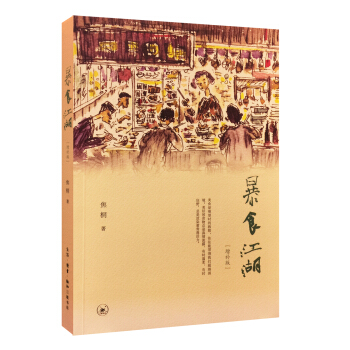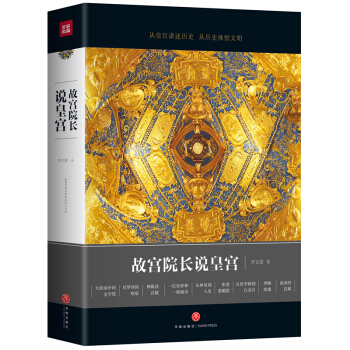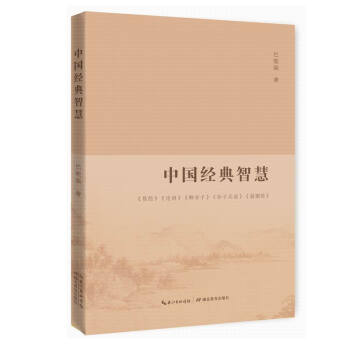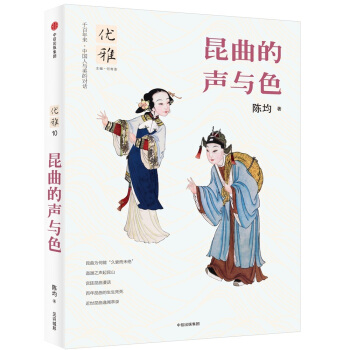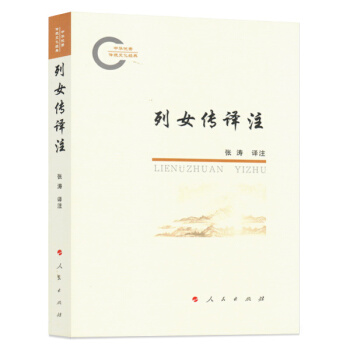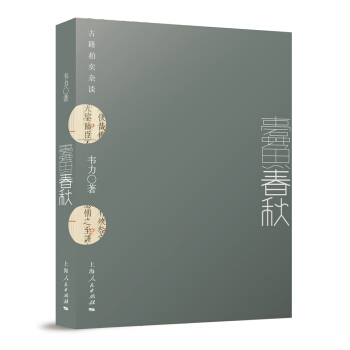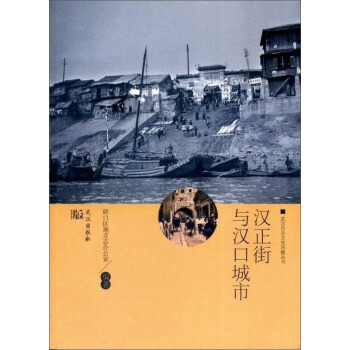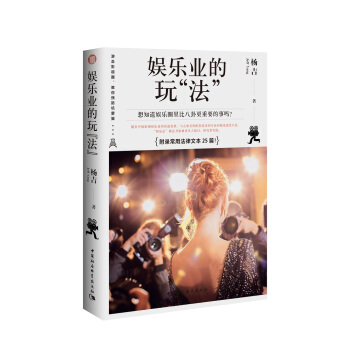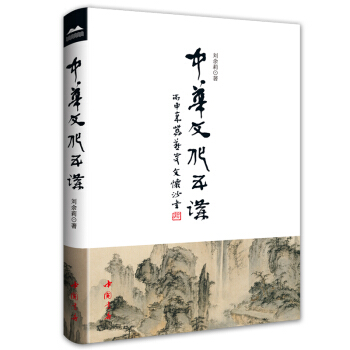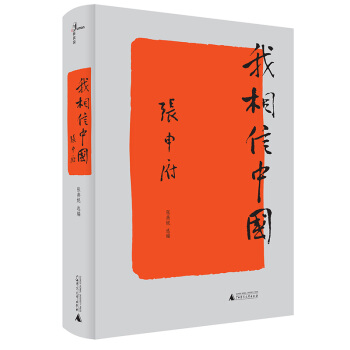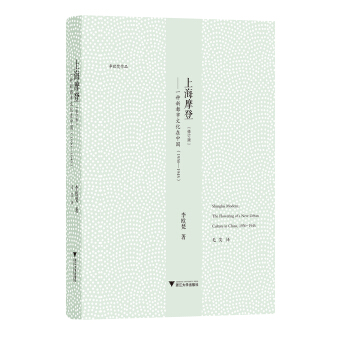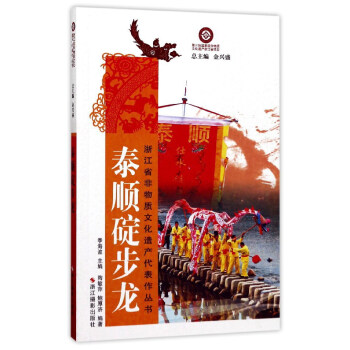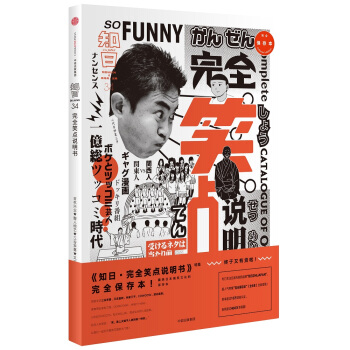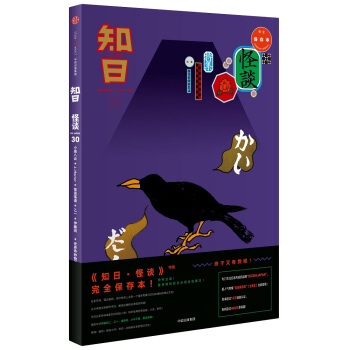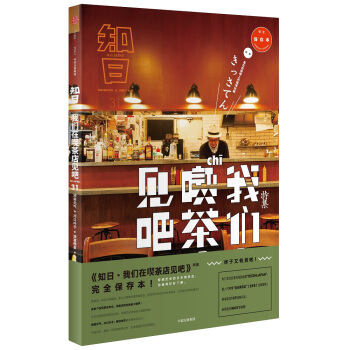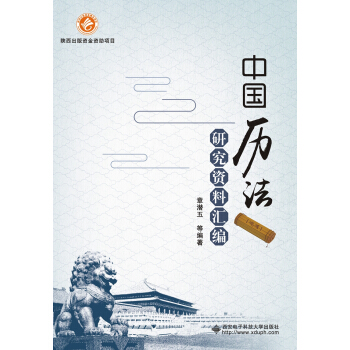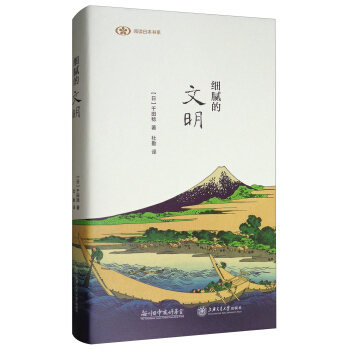![上海:夢之地 [Shanghai: Mosaic of Dreams]](https://pic.windowsfront.com/12224628/59c3478bN33bb8169.jpg)

具體描述
編輯推薦
適讀人群 :希望深入瞭解上海的外國友人,希望提升英語水準的中國讀者,涉外導遊等。The book is neither a history book nor a tour guide. It starts with people’s daily life and their stories, which actually reflects Shanghai’s history, culture and tradition behind. Anyone who is interested in Shanghai may read it from any page they like. To help readers have a rough idea of Shanghai and navigate easily to their interested topics, the book is divided into four sections, which are “Things you may not know about Shanghai”, “Shanghai Facts”, “Shanghai Style” and “Happening Shanghai”. After reading, readers may finally realize that Shanghai is a place worth visiting, working and living in.
內容簡介
Shanghai is a place where East meets West and East meets a new self. It is a link between history and modernity, a bridge between local and global, and a showcase of inclusiveness and dynamism. According to our survey, however, not a few foreigners have out-of-date stereotypes about Shanghai, and even China. In order to introduce a developing and livable Shanghai to the world and attract global talents, the book aims to look into the details of Shanghai’s history, culture and people’s daily life, unfolding a unique view of the city that may be new for the reader. The book also tells stories of the newcomers who come to Shanghai for career, romance and more, showcasing Shanghai’s legacy as a city of dreams.
作者簡介
The book was first compiled in Chinese under the guidance of Shanghai cultural experts, who contributed valuable inputs and comments on the structure and contents of the book, and guaranteed the facts to be true. Secondly, the book was translated by a team of native English speakers who have a good knowledge of both English and Chinese,such as Kathryn Minnick, Celine Garbutt and so on, presenting the contents in a native and appealing way. And it was finalized by Chai Mingjiong who commands nationwide prestige in the field of translation.
內頁插圖
精彩書評
1. 有角度,有高度,豐富充實瞭海派文化。
2. Most English books on Shanghai can be divided into the following types: chorography, tour guides and photo collections. Chorography may be too serious for the public to read; tour guides are mainly for travelling purposes; photo collections are visually pleasing but lack proper explanations. Therefore, we try to produce a book that introduces Shanghai in a structural and appealing way to foreigners, telling close-to-life stories accompanied with beautiful pictures. Instead of introducing official historical facts and cultural development, we focus on specific items such as time-honored brands, shikumen (a common housing architecture in Shanghai), nightlife, Shanghai-made food, etc. It is the details in life that attract readers and connect with them the most.
目錄
PREFACE
THINGS YOU MAY NOT KNOW ABOUT SHANGHAI
SHANGHAI FACTS
A Tale of Two Rivers
History: Becoming Shanghai
Shape of Shanghai
Rise of a Global Financial Center
Elements of Urban Life
"Strange" Shanghainese
SHANGHAI STYLE
Traditionat Shanghai
Time-Honored Brands: A Modern Revival
Academies: Inheritance and Innovation
Shikumen: Traveling Back Through the Stone Gate
Everybody Loves the Bund
Get Thee to a Show!
Lost in Museums
The Ancient Towns Next Door
Tapestry of Belief
Chic Shanghai
Where Trends Begin
Creative Effervescence
Shake the Night
Just Buy It!
A Cup of Fun, Please
Taste Shanghai
East or West, Shanghai-made is the Best!
What's in the Salad Bowl?
It Only Tastes Right Here
HAPPENING SHANGHAI
You Are Part of Shanghai
Dialogues Through Time: Why Shanghai?
Interviews: Dreaming the Dream
Cefine Gar6utt: The Boundless Love Between Me and Chinese
Weichong Khor: Shanghai - a Great Entry Point into the
Chinese Market
Xu Chunchun: From London to Shanghai, From LSE to SerendiPPo
George Fleming:. Shanghai Life
Stone Shi: Combining a Love of Delicious Food and Entrepreneurship - Shanghai Presents Unlimited Opportunities
Will Boyd: A Shanghai Foreign Son-in-law Infatuated by Chinese Culture
精彩書摘
"Strange" Shanghainese
The Wikipedia article on “Shanghainese People” presents photos of six notable Shanghainese – Xu Guangqi , a pioneer in promoting Sino-Western cultural communication in the Ming Dynasty (1368-1644 CE); Zhou Xuan, an iconic singer nicknamed the “Golden Voice” in the 1930s; Soong Ching-ling , the “Mother of Modern China”; Eileen Chang, one of China’s most influential modern writers; as well as two well-known athletes, Yao Ming and Liu Xiang . In Chinese culture, a person’s hometown refers to his or her ancestral home. In this sense, these six notable people were not “authentic” Shanghainese – Zhou Xuan was born in Jiangsu Province; Soong Ching-ling’s father was born in Hainan Province; Eileen Chang came from a prestigious family in Hebei Province; and the hometowns of Yao Ming and Liu Xiang are in Jiangsu Province. As for Xu Guangqi, who is known as “the first Shanghainese” in modern times and whose grandparents and parents lived in Shanghai – his earlier ancestors were also migrants to the city.
The origin of these Shanghai celebrities reflects the fact that a majority of Shanghainese are migrants or descendants of migrants. During the 150 years since Shanghai was opened to foreign trade in 1843, the city witnessed four large waves of migration. In the 1860s, a large number of refugees from Jiangsu and Zhejiang provinces fled to Shanghai due to the Taiping Rebellion. In the 1910s, when the Republic of China was founded, Shanghai attracted a large group of migrants and even immigrants who were seeking their fortune due to the city’s stable environment and thriving economy. In the late 1940s, civil war drove numerous refugees into Shanghai. Later, in the 1990s, the development of the Pudong New Area led to Shanghai’s full recovery and a huge number of people from other regions and countries flocked here to start new careers and lives. As of the end of 2014, “permanent residents from other regions or countries” constituted 40 percent of the population of Shanghai; and a big portion of the remaining 60 percent was “New Shanghainese” who lived and worked in Shanghai and had obtained a Shanghai hukou.
Shanghai, due to its long history – similar to New York and Hong Kong – of accepting migrants, is an exception to traditional cities: it is always open to the whole world. It is a melting pot where people of various origins meet, where rules come before the power of clans and personal relations, and where people with different accents, backgrounds and viewpoints can talk freely. In the process, Shanghai has received both praise and criticism from people of other regions and countries.
Shanghainese have a reputation for being disciplined and trustworthy both in business and in daily life. They always play by the rules and seldom step out of line or take advantage of loopholes, thus enjoying high favor among their business partners worldwide. In addition, Shanghainese have a strong sense of responsibility. They play an active role in charity and voluntary work, ranging from community affairs to national or even global public welfare activities. Shanghainese are also regarded as well-bred people with broad horizons, as evidenced by the fact that Shanghai students often enroll in prestigious universities overseas and adult Shanghainese show a high level of proficiency in English that can rival Hong Kong residents. Even those who don’t particularly like Shanghainese have to admit that they have a taste for fashion and an elegant lifestyle and are competent at work and skillful in social interactions.
However, some traits of Shanghainese leave much to be desired. The most notorious is their exclusiveness. Although Shanghainese insist they only exclude those who show little respect for Shanghai culture and behave disgracefully when staying in the city, the conflict of interest resulting from a swelling population and the shortage of urban resources aggravates this tendency towards exclusion, turning it into “regional discrimination.” Shanghainese also come under attack for their shrewdness. Shrewdness can be seen as a sign of reason and wisdom, but in fact, the shrewdness of Shanghainese manifests more as being stingy, snobbish and calculating. What’s more, behind the attractive appearance of Shanghainese is a certain vulgarity of taste and manners. For example, they like to talk loud in dialect in public places and they walk their dogs or go shopping in their pajamas. Given the various stereotypes that the word “Shanghainese” conjures up, “You are nothing like a regular Shanghainese” seems to be the highest compliment someone can give to a native Shanghainese. It’s interesting that most Shanghainese willingly accept this kind of compliment.
To sum up, Shanghainese have a civic consciousness and uphold the rule of law like citizens in Western societies. They are also good-natured, elegant, shrewd and pragmatic like traditional Chinese people. Furthermore, they are sober-minded, wise and generous, but with a touch of narrowness and snobbery.
The character of Shanghai people is closely associated with the city’s development. Therefore, to find out why Shanghainese have developed such a complex and paradoxical character, we need to take a look at the city’s history.
Before opening to the outside world, Shanghai was not culturally or politically important. As a trading port, it had a favorable and diversified business environment, which helped lay the groundwork for the creativity, openness, inclusiveness and economic pragmatism that Shanghainese would show in later eras.
After the opening of Shanghai in the mid-19th century, people from Britain, the U.S., France, Russia and many other parts of the world came to this city. Most of these people lived in concessions governed by foreign powers. After several waves of internal migration, however, Chinese people gradually assumed the majority in the foreign concessions. Compared to migrants – mainly from Jiangsu, Zhejiang and Guangdong provinces – local residents living in the old part of Shanghai became the minority. The “intrusion” of domestic migrants and foreign settlers had a great influence on the Shanghainese character. On the one hand, domestic migrants became new Shanghainese and their native cultures became part of Shanghai culture. On the other hand, Shanghainese also learned quite a lot from the customs, values and social systems of foreign settlers. Consequently, Shanghai became China’s center of Western learning and Shanghainese took the lead in developing civic consciousness, cosmopolitanism and other modern concepts.
After the 1950s, Shanghai’s status declined. It was no longer an international trading port but rather a regional industrial center, and domestic migration was curbed by a strict household registration system. As a result, the international sensibility of Shanghainese evaporated and their pioneering spirit also diminished. To support the central government’s national development strategy, a large number of Shanghai professionals were also dispatched to other parts of China and most of the city’s fiscal revenue was handed over to the state. After seeing the material and cultural differences between Shanghai and other places in China, the dispatched Shanghainese began to feel superior to Chinese from outside Shanghai. Meanwhile, the tightening economy weakened the ambition of those who stayed in Shanghai. Instead of exploring the outside world, they were forced to ensure their livelihood by making every cent count. That is why more recent Shanghainese have been regarded as shrewd. However, thanks to reform and opening-up in the latter part of the 20th century, Shanghai’s spirit of openness was revived along with people’s humanistic vitality, which had been suppressed by straitened circumstances. In the early 1990s, Shanghainese still exhibited a certain sense of superiority and isolation due to the influence of the planned economy; however, in the new century, Shanghainese, including many migrants, have gradually recovered their open mind and warm heart, which is deeply rooted in their cultural genes.
Today’s Shanghainese are able to appreciate both refined and popular culture and live a life embracing both Chinese and Western features. If you are questioning whether by doing so they have betrayed both cultures or not, I suggest you see Shanghainese from a different angle and recognize their strong innate ability to fuse together different, seemingly contradictory qualities. With a tradition of embracing all different types of people, Shanghai has welcomed numerous migrants who have contributed to its dynamic population. In turn, these migrants have endowed Shanghai with more possibilities and opportunities for the future.
前言/序言
Shanghai was born a small fishing town. In time it became a textile center and manufacturer of lush fabric. Later, Shanghai itself became the fabric: a tapestry of threads from across China and later the globe, a mosaic of individual lives and aspirations, a city with arms as wide as the world.
Shanghai’s arms were first forced open to the broader world by the humiliations of colonialism in 1842, whose depredations continued for more than a century. But Shanghai proved more resilient than the colonial powers that tried to bring the city to its knees. Generations of new arrivals from both China and abroad found in Shanghai – and helped create in Shanghai – a spirit of tolerance, an embrace of the future, and the soil for nurturing untold millions of individual dreams.
Shanghai – as the glamorous “Paris of the East” of the 1920s and 1930s, the only safe haven in the world for Jewish refugees in World War II and the site of the first Congress of the Communist Party of China – has a luminous, inclusive history. But it is the city’s present and future that shine even brighter.
Today, Shanghai is a star within China, East Asia and the world. As a leader of China’s reform and opening up process, it sets national trends in economic, social and cultural development. On the global stage, Shanghai is one of the fastest growing, most dynamic metropolises on Earth: It is an undisputed global financial center, a transportation hub with the world’s busiest container port, a center of East-West commerce and a gathering place for people from every corner of the planet. Indeed, few cities evoke as much history, ambition, glamour and exotic promise by name alone. But no other city in the world is like Shanghai – a land of rich accomplishments, but more fundamentally, a land of dreams.
Dreams are the bedrock of Shanghai’s accomplishments and the city itself. They are the spiritual dynamo that has driven countless earlier generations to turn Shanghai into what it is today – a link between history and modernity, a bridge between local and global, and a showcase of inclusiveness and dynamism. It is a place where East meets West and East meets a new self.
Shanghai is a magnet for those who have dreams – humble or grand; of life, love, career or more. As it has done for countless generations, the city embraces all comers – giving them the chance to make their dreams real, to add their own small piece to the lustrous mosaic that is Shanghai.
Whoever you are, however long you stay, be part of the dream. Be part of Shanghai.
用戶評價
《上海:夢之地》這個名字,就像一句低語,帶著一種神秘的邀請,讓我迫不及待地想深入其中。上海,這個名字本身就充滿瞭故事,它承載瞭太多的曆史、太多的傳奇,也孕育瞭無數的夢想。我一直覺得,上海是一座需要用心去感受的城市,它不是那種一眼就能看穿的直白,而是需要慢慢品味,細細挖掘的韻味。這本書,是否能幫助我做到這一點?我希望它能夠帶我穿越時空的隧道,去感受那個風雲變幻的年代,去觸摸那些曾經在這片土地上發生過的故事。我期望,它能描繪齣上海獨特的風情,那些藏匿在老建築裏的故事,那些在弄堂裏傳遞的溫情,那些在黃浦江邊流淌的時光。同時,我也想知道,這本書是否也會展現上海的現代魅力,那些高樓林立的都市景觀,那些充滿活力的商業街區,那些引領潮流的文化藝術。我想要看到的是一個立體、鮮活、有靈魂的上海,一個既有曆史沉澱,又有時代精神的上海。這本書,仿佛是我的鑰匙,讓我能夠打開那扇通往上海“夢之地”的大門,去探索那些我心馳神往的角落。
評分這本書的書名就足夠吸引人瞭,《上海:夢之地》。第一次翻開它,就被這個名字深深地勾起瞭好奇心。我一直對上海這座城市有著莫名的情結,或許是因為那些老電影裏的片段,或許是因為那些故事裏的上海灘,又或許是因為它現代化的都市傳說。這本書,仿佛承諾著要帶我走進一個關於上海的、不止於現實的夢境。我期待著,在這本書的字裏行間,能夠找到那些潛藏在繁華背後,那些被時間打磨過的、充滿情感的上海故事。它不僅僅是一個地理名詞,更是一種生活方式,一種文化符號,一種精神寄托。我想知道,作者是如何捕捉到這座城市的靈魂的?是通過那些細緻入微的描寫,還是那些觸動人心的敘事?這本書會不會展現上海的市井生活,那些藏匿在弄堂裏的吆喝聲,那些煙火氣十足的街角小店?抑或是那些高聳入雲的摩天大樓,那些光影交錯的夜晚,那些流淌著財富與野心的故事?我更傾嚮於相信,它會是一幅描繪上海多元麵貌的畫捲,既有過去的懷舊,也有當下的活力,更有對未來的憧憬。這本書,就像一個潘多拉的盒子,我迫不及待地想去打開,去探索裏麵到底藏著多少關於上海的“夢”。我希望,這本書能夠帶給我一種沉浸式的體驗,讓我仿佛置身於那個我一直嚮往的上海。
評分“上海:夢之地”,這個書名本身就充滿瞭詩意和吸引力,讓我對這本書充滿瞭期待。上海,對我來說,是一個承載瞭無數故事和夢想的城市。它既有曆史的韻味,又有現代的活力;既有東方的含蓄,又有西方的浪漫。我一直很想深入地瞭解這座城市,去感受它獨特的魅力。這本書,是否能帶我走進那些充滿故事的老建築,去聽它們訴說往昔?是否能讓我漫步在那些狹窄的弄堂裏,感受那份市井的溫情?又或者,它會描繪齣黃浦江畔的璀璨夜景,那些象徵著上海無限可能的摩天大樓?我希望這本書能夠呈現一個立體、生動、有靈魂的上海。它不僅僅是一個地理位置,更是一種精神,一種生活方式,一種“夢之地”。我渴望在這本書中,找到我對上海的想象與現實的交匯點,去感受那份獨屬於這座城市的浪漫與活力。
評分“上海:夢之地”,單是這個書名,就已經讓我浮想聯翩。上海,這座城市,在我心中,一直都帶著一種獨特的、難以復製的魅力。它既有曆史的厚重感,又有現代的活力;它既有東方的情韻,又有西方的浪漫。我一直覺得,上海是一座需要慢慢品味的城市,它不像其他城市那樣直白,而是隱藏著許多故事和細節,等待著你去發掘。這本書,是否能成為我深入瞭解上海的“鑰匙”?我期待它能帶領我穿越時空的隧道,去感受那個風雲變幻的年代,去觸摸那些曾經在這片土地上發生過的故事。我期望,它能描繪齣上海獨特的風情,那些藏匿在老建築裏的故事,那些在弄堂裏傳遞的溫情,那些在黃浦江邊流淌的時光。我更希望,它能展現上海的現代魅力,那些高樓林立的都市景觀,那些充滿活力的商業街區,那些引領潮流的文化藝術。
評分《上海:夢之地》這個書名,自帶一種詩意和想象空間。上海,在我心中,一直是一個充滿魅力的城市,它融閤瞭東西方的文化,承載瞭無數的故事和夢想。我總覺得,上海不僅僅是一個地理概念,更是一種生活方式,一種精神符號。這本書,是否能幫助我更深入地理解這座城市的靈魂?我期待它能帶我走進那些曆史悠久的建築,感受它們承載的歲月痕跡;我希望它能描繪齣上海獨特的街景,那些老洋房、石庫門,那些穿梭在弄堂裏的人們,他們的生活,他們的故事。同時,我也好奇,這本書是否也會展現上海現代化的發展,那些飛速崛起的摩天大樓,那些充滿活力的商業區,那些引領潮流的文化藝術。我希望它能呈現一個立體、多麵的上海,一個既有懷舊的韻味,又有前沿的活力,一個真正屬於“夢之地”的上海。這本書,就像一個 promises of discovery,我迫不及待地想去揭開它的麵紗,去感受那份屬於上海的獨特魅力。
評分“上海:夢之地”,這書名本身就有一種魔力,像一塊磁石,把我牢牢吸引。上海,這個城市,對我而言,總是有著一種特彆的吸引力。它不像北京那樣厚重,不像廣州那樣務實,上海總帶著一種精緻、一種浪漫,一種難以言喻的國際範兒。我一直好奇,作者是如何捕捉到這種“夢之地”的感覺的?是通過描繪那些繁華的夜景,那些燈火輝煌的摩天大樓?還是通過挖掘那些隱藏在老洋房裏的故事,那些曾經的十裏洋場,那些風雲變幻的時代?我期待這本書能夠帶我深入上海的肌理,去感受它的脈搏。或許,它會講述那些生活在上海的人們的故事,他們的夢想,他們的奮鬥,他們的愛恨情仇。或許,它會展現上海的獨特風情,那些旗袍、咖啡館、爵士樂,那些融匯中西的文化元素。我希望,這本書能讓我仿佛身臨其境,在字裏行間,感受到上海的呼吸,觸摸到這座城市的靈魂。
評分“上海:夢之地”——僅僅是這個書名,就足夠勾起我強烈的好奇心。我腦海中關於上海的印象,總是交織著曆史的滄桑和現代的繁華,帶著一種難以言說的魔力。這本書,是否能將這些零散的畫麵串聯起來,形成一幅完整而動人的畫捲?我希望它能帶領我走進那些隱藏在市井街巷中的生活碎片,捕捉那些平凡人物的喜怒哀樂,感受上海獨特的市井煙火氣。同時,我也期待它能描繪齣上海作為國際大都市的宏大敘事,那些在曆史洪流中沉浮的事件,那些在中外文化碰撞中誕生的奇跡。這本書,會是曆史學傢筆下的嚴謹考證,還是作傢筆下的浪漫想象?抑或是兩者兼而有之?我渴望在這本書中,找到我對上海的期待和想象的共鳴,看到一個既有溫度又有深度,既有故事又有情懷的上海。它承諾的“夢之地”,聽起來就像一個充滿無限可能的空間,我希望這本書能為我打開一扇窗,讓我得以窺見那片迷人的風景,讓我的心也隨之在上海的夢境中徜徉。
評分《上海:夢之地》這個書名,就像一句低語,邀請我去探尋。上海,在我腦海中,一直是那個充滿魔力、故事無數的城市。它融閤瞭曆史的滄桑與現代的繁華,散發著一種獨特的都市氣息。我希望這本書能帶我深入到上海的肌理之中,去感受它的呼吸。或許,它會描繪齣那些隱藏在老洋房裏的往事,那些曾經的十裏洋場,那些在弄堂裏飄蕩的煙火氣。又或許,它會展現上海作為國際大都市的活力,那些高聳入雲的建築,那些川流不息的人群,那些引領潮流的文化。我期待這本書能夠呈現一個鮮活、立體、有溫度的上海。它不僅僅是一個地名,更是一種情懷,一種夢想的載體。這本書,就像一個窗口,讓我能夠窺見上海的“夢之地”,感受那份獨屬於它的迷人魅力。
評分翻開《上海:夢之地》,腦海裏首先浮現的是那些老上海的黑白照片,穿著旗袍的女子,穿著西裝的紳士,在黃浦江邊,在十裏洋場。但是,這本書的名字又暗示著,它不僅僅是關於過去的懷舊,更是一種“夢之地”,這讓我感到非常好奇。上海,這座城市,本身就像一場不斷變換的夢境。它既有曆史的厚重,又有現代的活力;它既有東方的情調,又有西方的浪漫。我期待這本書能夠捕捉到這種多重性的魅力,能夠展現上海的過去、現在和未來。我希望它能帶我走進那些我從未去過卻一直想象著的上海場景:或許是老洋房裏低語的往事,或許是弄堂裏飄齣的飯菜香,或許是陸傢嘴的夜景,那些璀璨的燈光似乎訴說著無數個奮鬥與夢想的故事。這本書會不會像一個導遊,帶領我深入探索上海的每一個角落,每一個被遺忘的細節?我期待在字裏行間,感受到這座城市的呼吸,感受到它獨特的韻律。這本書的名字,“夢之地”,已經成功地在我的腦海中種下瞭一顆種子,我迫不及待地想讓它在這片文字的土壤中生根發芽,長成一幅我心中關於上海的最美的畫捲。
評分《上海:夢之地》這個名字,讓我心生嚮往。上海,對我來說,是一個充滿故事和想象的城市。它既有曆史的沉澱,又有現代的活力;它既有東方的情韻,又有西方的風情。我希望這本書能夠帶我深入瞭解這座城市的獨特魅力。是那些老洋房裏訴說的舊日時光?是那些穿梭於弄堂裏的人們,他們的生活百態?還是陸傢嘴的燈火輝煌,象徵著這座城市的飛速發展和無限可能?我期待這本書能呈現一個多維度、立體化的上海。它或許會講述曆史的變遷,展現文化的多樣性,描繪人物的命運沉浮。我希望它能讓我感受到上海的溫度,觸摸到這座城市的靈魂。這本書,仿佛開啓瞭一扇通往上海“夢之地”的大門,我迫不及待地想踏入其中,去探索那些我所未知的美好。
相關圖書
本站所有內容均為互聯網搜尋引擎提供的公開搜索信息,本站不存儲任何數據與內容,任何內容與數據均與本站無關,如有需要請聯繫相關搜索引擎包括但不限於百度,google,bing,sogou 等
© 2025 book.coffeedeals.club All Rights Reserved. 靜流書站 版權所有

